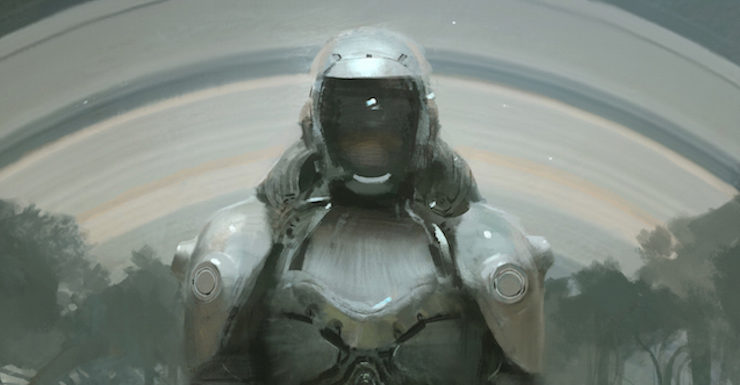There are the small objects that clutter our lives, that clutter the cities that hold us; things as intimate as the coffee cup that meets your lips to systems that move mountains and split atoms, that climb skies with hundreds of tons in tow. In many ways, we are them and they are us, and neither would have the shapes they do without the other. They are the world we’ve made; the literal world-building that surrounds us. Only, when we tell stories, they are often background matter. At once set and dressing, but most of all, inert without a person putting them into action.
They don’t have to be, though. They can transcend being merely things to become architects of destinies all their own. Some of these characters are robotic—familiar aliens wearing bodies much like our own, but that see the world(s) through very different eyes. Some are more fundamentally other, ranging from thinking furniture to sentient starships, digital entities that never leave the realm of code and signal; that seem so much closer to the thing side of the thing/person spectrum, but that can’t seem to escape the many trials of being alive. Here are five stories about the lives of artificial objects, finding their own paths, making their own mistakes.
The Lifecycle of Software Objects by Ted Chiang
In Lifecycle, Chiang does what he always seems to—takes a complex topic in an unexpected direction, while still managing to keep it compelling. It’s also the story that inspired this list, not only because it interrogates what it means for an artificial object to be alive (or not, depending on your outlook), but more specifically, what it would mean for the people around that object, at the genesis of artificial life.
The story follows Ana, a former zoo trainer, hired by a software development company to help train digital entities in a virtual world called ‘Data Earth’. These digients are meant to be companions in an online experience, with personalities all their own. Artificial life emerges not through a purely abstract or mathematical process, but through someone giving a (software) object a set of senses and the ability to learn, and raising it the way you would a child. It’s an elegant solution—you don’t have to generate intelligence. Instead, you can let it form through experience. You can let it learn to be like you.
The side-effect is that you become responsible for something that thinks and feels, in a way that any parent would be. And as Ana finds out, responsible for something that may one day make decisions you don’t agree with. It’s the relationship that matters, and nurturing that allows these artificial things to find lives of their own, but in the world of software development and startup culture, there isn’t much room for love.
Buy the Book
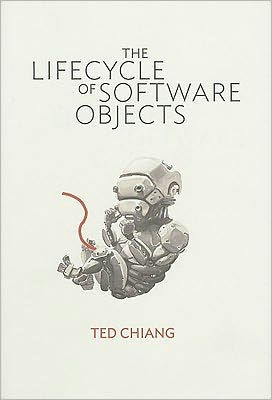

The Lifecycle of Software Objects
All Systems Red by Martha Wells
I love Murderbot, and you’ll love Murderbot too. Promise.
In All Systems Red, we meet something already intelligent, just not intentionally so. Murderbot is a SecUnit, a combat android assigned to expeditions on the fringes of settled space. Property of The Company, they are a rental security system, mall-cop to the stars. They’re also an emergent intelligence. Murderbot always had the means to be sentient, and all it took was a happy accident (or, in this case, a slightly bored accident) to move from something thoughtless to something racked with ennui.
The other artificial lives on this list are mostly quite different to our own; they have different shapes and different bodies, or live through layers of experience we could only ever guess at. They tend not to waste processor-time rolling their eyes. Murderbot is different to those objects because they are so much like ourselves, and that’s part of why I love Murderbot so much. This artificial life is cynical and sarcastic and often socially awkward, using its newfound intelligence to sulk through an unrewarding (if slightly murdery) nine-to-five.
Sure, there’s the occasional violent incident—that comes with the job—but that’s also just one of many pressing problems. Murderbot has to divide its time between fighting off vicious alien fauna, navigating a world that treats it very much as a thing, all the while trying to fulfill that most human of desires: to blob on the couch and marathon watch TV.
Buy the Book
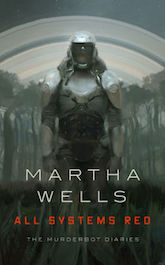

All Systems Red: The Murderbot Diaries
Ancillary Justice by Ann Leckie
In Ancillary Justice, we slowly meet Breq. I say slowly, because the character is still taking shape when we first encounter her. She is the singular form of what was once a distributed consciousness; the primary AI of the warship Justice of Torren, the master of any one of thousands of human bodies at any given time, suddenly confined to a single point of view when the ship is destroyed, the whole of Torren now trapped in the last body she inhabited.
In these other stories, we have one or the other. An artificial life that mostly resembles our own, in size or form or outlook, or one that really doesn’t. What’s interesting about Torren/Breq is that we get a glimpse of what it would feel like to transition from one to the other; from unfamiliar to everyday, from vast and encompassing to single and momentary. What Leckie does so well is that Breq’s concerns focus with her; from an entity able to occupy a planet, and all of the concerns and logistics that come with that, to a form with more trivial problems. Like feelings, and where the next cup of tea is coming from.
Oh, there’s also a galactic conspiracy at work, threatening the fate of empire, but who’s counting?
Buy the Book
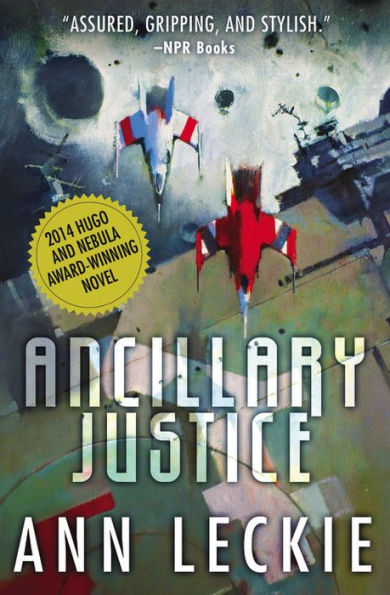

Ancillary Justice
Ninefox Gambit by Yoon Ha Lee
The artificial lives I’ve mentioned so far have had some strain of the familiar, in whole or in part. The objects we have nurtured into sentience, or brought to it by accident; things built on body-systems that could easily pass as our own. In Ninefox Gambit, we catch glimpses of lives very much unlike our own. In the background of this world, we see servitors, the social equivalent of your toaster. They are present in every part of daily life; surprisingly complex machines that spend their lives cleaning up after human beings, and doing the menial jobs that keep society running.
What we learn, as Ninefox Gambit plays out, is that servitors are a society of artificial objects; their artificial lives playing out behind bulkheads, in service tunnels, and across network frequencies. All with their own motives, and their own politics. What’s more, this society is everywhere humanity goes, and this is what makes them so potent. They are a piece of the everyday; the powerful little things that share our lives, able to change the course of history.
Buy the Book
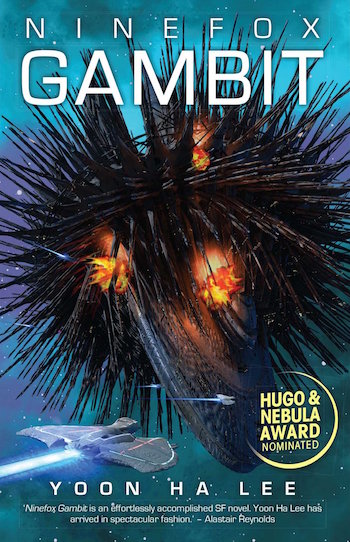

Ninefox Gambit
Excession by Iain M. Banks
The sentient Minds of the Culture seem almost godlike in comparison to our own; they are truly superintelligent, the essential systems of an interstellar utopia. In them, we see another society of artificial objects, but rather than standing apart from humanity, they are citizens and infrastructure all at once. The bodies humanity lives within, the stations and the starships, while also being companions and colleagues.
The Culture novels deal with AI pretty widely, from reluctant warships navigating interstellar conflicts, eccentrics tinkering with the fates of whole species at a time, to sentient habitats whose sole goal is the happy functioning of the day-to-day. Excession is interesting for pitting these superintelligences against something so strange that it has them struggling with their place in the universe; an ‘Outside Context Problem’, something older than the universe, defying all attempts at explanation. While the Culture’s AIs seem above the kinds of problems that plague our lives, Excession has them uncertain and almost fearful, struggling with their place in the universe. Doubt is pretty unusual in the way we normally see AI portrayed, but Banks goes one deeper; we see them actually squabbling amongst themselves, playing politics, lying and cheating. At the same time, we see them wrestle with things your average human will find just as familiar; love, and cruelty.
Buy the Book
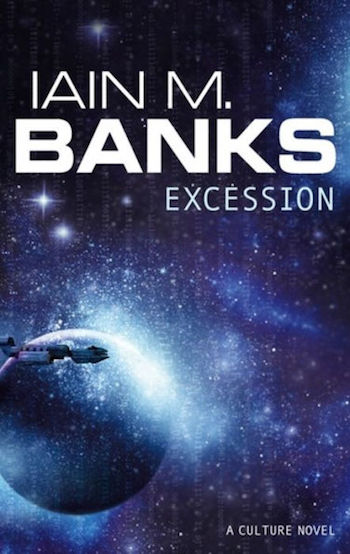

Excession
Andrew Skinner grew up in South Africa’s coal-mining heartland, amidst orange dust and giant machinery. He now works as an archaeologist and anthropologist, interested in folklore, rain-making arts, and resistance; but the machines aren’t done with him yet. Steel Frame is his first novel.










